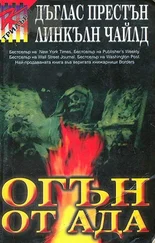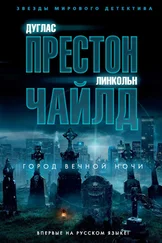“Well, there were a lot of theories flying through the air at the time, you’ll recall,” Bryce said. “I just didn’t buy into the notion that there was more than one murderer at work. Once I’d made that realization, it was just a question of looking for what all the victims had in common.”
She glanced over at a teleprompter, which was scrolling lines from Harriman’s first article. “You said that the victims were all ‘utterly lacking in human decency.’ That ‘the world would be better off if they were dead.’”
Harriman nodded.
“And cutting off their heads is, you believe, a symbolic gesture?”
“That’s right.”
“But I mean, beheading... any chance this is the work of jihadists?”
“No. That doesn’t fit the pattern. This is the work of one man, and he’s using decapitation for reasons that are very much his own. True: this is an ancient punishment, a manifestation of God’s wrath at the sin and depravity so rampant in today’s society. Even the term capital punishment comes from caput , the Latin word for ‘head.’ But this killer is preaching, Kathee: he’s warning New York, and by extension the whole country, that greed, selfishness, and gross materialism will no longer be tolerated. He’s targeting the most predatory of the one percenters who seem to be taking over our city these past few years.”
Kathee nodded vigorously, eyes shining, drinking in his every word. Bryce realized something: with this one story, he had become a celebrity. He’d taken the most high-profile series of murders in many years and, single-handedly, owned it. His follow-up articles, carefully scripted for maximum sensation and to polish his own image, were just icing on the cake. Everyone in New York was hanging on his every word. They wanted, needed him to explain the Decapitator to them.
And he would be only too happy to oblige. This interview was a golden opportunity to fan the flames — and that was just what he would do.
“But what is he preaching, exactly?” Kathee asked. “And who is he preaching to?”
Bryce tugged self-importantly at his tie, careful not to disturb the mike. “It’s quite simple, really. Look what’s happened to our city, the corrupt wealth pouring in from overseas, the fifty- and hundred-million-dollar apartments, the billionaires walling themselves off in their gilded palaces. New York City used to be a place where everyone, rich and poor, rubbed shoulders and got along. Now the uber-rich are taking over our city, stomping on the rest of us. I think the killer’s message to them is: Mend your ways .” He gave these last words an ominous spin.
Kathee’s eyes grew wider. “Are you saying that the Decapitator’s going to keep killing the super-rich?”
Harriman let a long, pregnant moment pass. Then he nodded. Time to fan those flames. “I do. But let’s not become complacent. He may be starting with the rich and powerful,” he intoned. “But if we don’t heed his warning... that may not be where he stops. We’re all at risk, Kathee — every last one of us.”
The security offices for the Seaside Financial building, and LFX Financial in particular, were located in a windowless basement suite of painted cinder block and functional metal furniture. But the actual surveillance system, D’Agosta realized as soon as they entered, was state-of-the-art, brand-new, and run by a more-than-competent group. The head of the security team, a guy named Hradsky, had sequestered all the video from the entire building and had organized and copied it onto hard drives for the NYPD tech team, who had carted it away. But D’Agosta didn’t want to wait to see it at 1PP, which would take hours, if not a day, to set up. He wanted to see it immediately. And so Hradsky had obligingly organized it and had everything ready to roll when D’Agosta and Pendergast arrived with Sergeant Curry in tow.
“Gentlemen, come on in.” Hradsky was a small guy with black hair, a rack of dazzling white teeth, pink gums, and a big smile that was, apparently, continuously on display. He looked more like a barber than a security tech, but as D’Agosta watched the man bustle about the viewing room, switching on this, plugging in that, and tapping on this and that keyboard, he realized they were damn lucky. Most security directors were unhelpful, if not downright hostile. This guy aimed to please and clearly knew what he was doing.
“So what, exactly, would you fellows like to see?” Hradsky said. “We have a lot of cams and over a thousand hours of video created in just the last day. We sent it all back with your people.”
“What I want is simple. There’s a cam right outside those inner office doors. I want you to go to that feed and start at the moment the bodies were discovered — and run the tape backward at double speed.”
“Very well.”
It took Hradsky only a moment to set things up and darken the room. A surprisingly clear image popped up on the screen, a wide-angle view of the inner double doors and the area surrounding them, with desks on either side. It started out with the guy who found the bodies sitting with his head in his hands, while a secretary was laid out on a couch next to him. Then they staggered up, the guy dragging the lady backward into the inner office. A few moments later they came back out, walking backward, and here was the guy trying the locked door handle with the lady, and then the lady walked backward to her desk and the guy walked backward out of view and the doors remained closed while people swarmed this way and that in the outer office.
They waited as the seconds continued to run backward. And then the doors opened and a man with a large instrument case appeared on stage left, walking backward, and entered the office doors, backward, the door shutting.
“Freeze!” D’Agosta said.
Hradsky froze it.
“Play forward in slo mo.”
He played it forward, and now the doors opened and the man walked out.
“Freeze frame.” D’Agosta got up and stared. It was a remarkably clear shot. “That’s our guy, right? He was the last one out of the office before the bodies were found. That’s gotta be him.” He looked at Pendergast, half expecting a contradiction.
But no, Pendergast said: “Your logic is airtight.”
“Look at the thing he’s carrying. Big enough for either a sword or two heads! And the timestamp is just when the M.E. put the time of death. Holy shit, that’s him!”
“It would seem without a doubt,” said Pendergast.
“So who is he?” D’Agosta turned to Hradsky. “You seen him before?”
Hradsky moved the frame forward and backward, isolated the guy’s face, expanded it, and worked a few software controls to sharpen it. “He looks familiar. I think he works here. Shit, it’s McMurphy!”
“Who’s that?”
He pressed a button and a digital personnel file sprang on the screen. There was a picture of the man beside his name: Roland McMurphy, assistant vice president, with all his personal data: phone, address on Columbus Avenue, everything.
“That’s our guy.” At last. D’Agosta had difficulty keeping the exultation from his voice.
“Um,” Hradsky said, “I don’t think so.”
“What do you mean?”
“ McMurphy? I can’t even begin to imagine him doing this. He’s one of those slope-shouldered guys, you know, with the double chin, a hypochondriac, butterfly collector, cello player, scurries around like he’s about to get whipped.”
“It’s sometimes the guys you least suspect,” said D’Agosta. “They explode.”
“We can verify his presence. We keep digital records of everyone who comes in and out of the building.” Hradsky was paging through some on-screen records. “Says here he didn’t come in to work — called in sick, it seems.”
Читать дальше
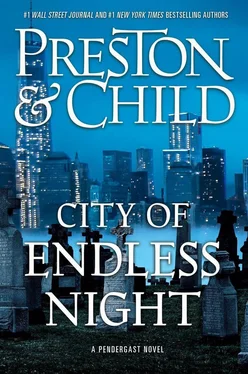
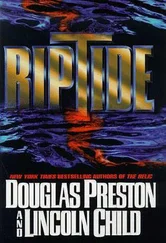
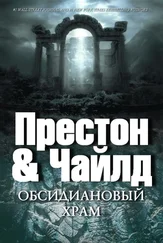
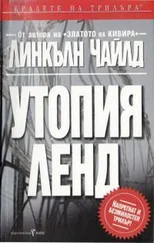

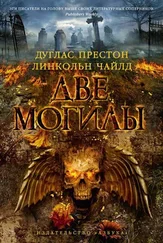
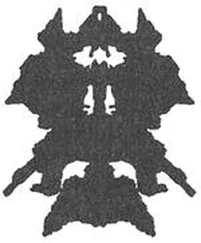
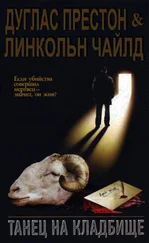

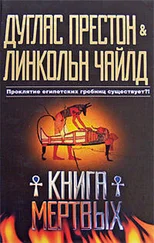
![Линкольн Чайлд - Стихи для мертвецов [litres]](/books/396536/linkoln-chajld-stihi-dlya-mertvecov-litres-thumb.webp)
